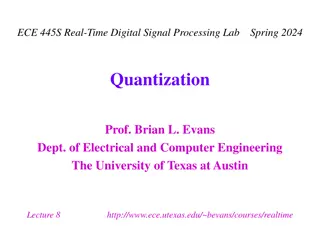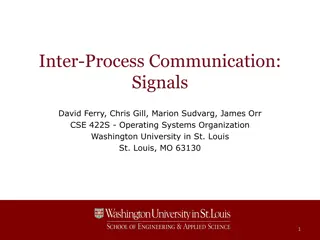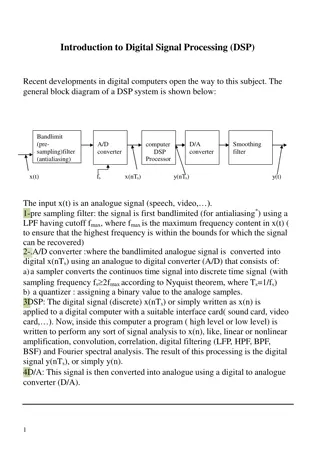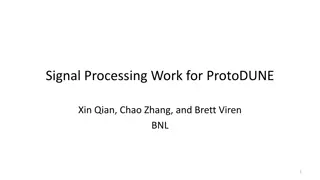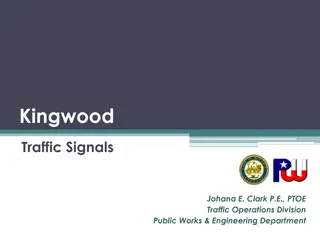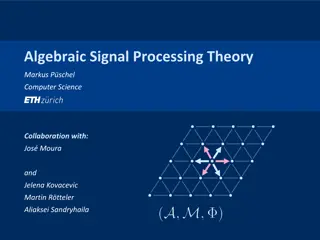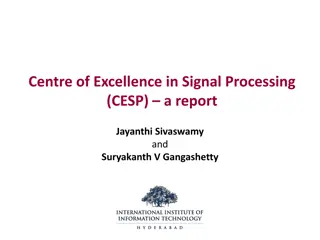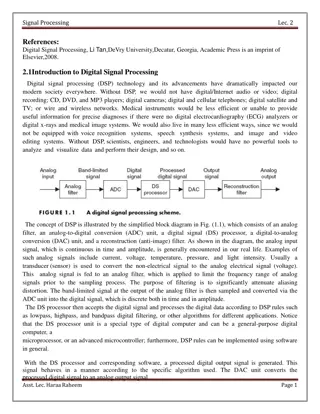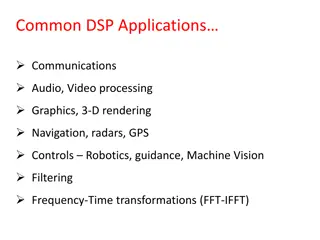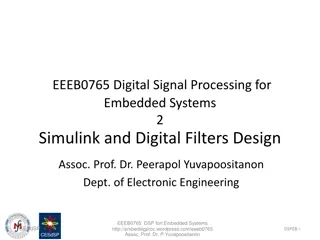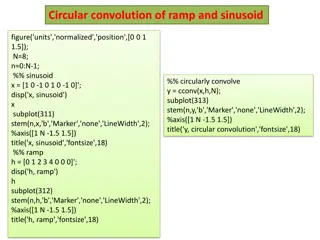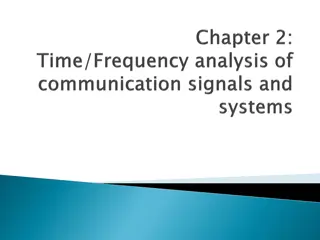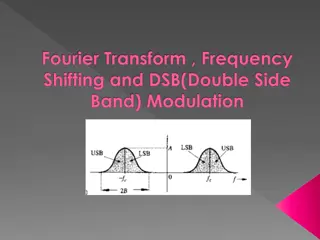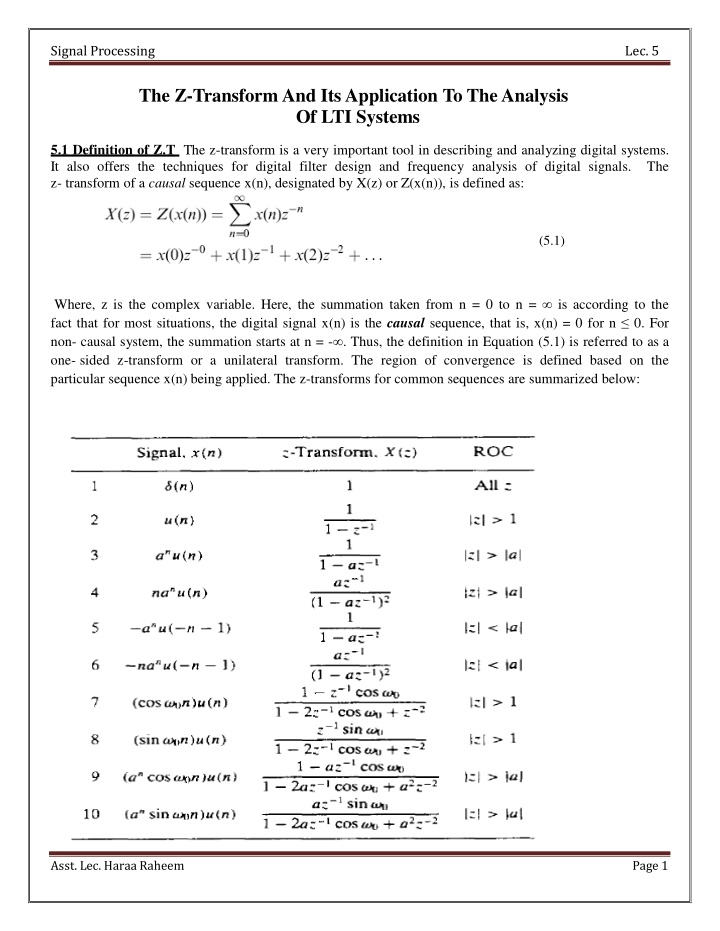
The Z-Transform in Signal Processing
Explore the significance of the Z-Transform in analyzing digital systems, filtering designs, and frequency analysis in Signal Processing. Learn about its properties, applications, and methods for inversion. Examples and homework tasks included.
Download Presentation

Please find below an Image/Link to download the presentation.
The content on the website is provided AS IS for your information and personal use only. It may not be sold, licensed, or shared on other websites without obtaining consent from the author. If you encounter any issues during the download, it is possible that the publisher has removed the file from their server.
You are allowed to download the files provided on this website for personal or commercial use, subject to the condition that they are used lawfully. All files are the property of their respective owners.
The content on the website is provided AS IS for your information and personal use only. It may not be sold, licensed, or shared on other websites without obtaining consent from the author.
E N D
Presentation Transcript
Signal Processing Lec. 5 The Z-Transform And ItsApplication To TheAnalysis Of LTI Systems 5.1 Definition of Z.T The z-transform is a very important tool in describing and analyzing digital systems. It also offers the techniques for digital filter design and frequency analysis of digital signals. z- transform of a causal sequence x(n), designated by X(z) or Z(x(n)), is defined as: The (5.1) Where, z is the complex variable. Here, the summation taken from n = 0 to n = is according to the fact that for most situations, the digital signal x(n) is the causal sequence, that is, x(n) = 0 for n 0. For non- causal system, the summation starts at n = - . Thus, the definition in Equation (5.1) is referred to as a one- sided z-transform or a unilateral transform. The region of convergence is defined based on the particular sequence x(n) being applied. The z-transforms for common sequences are summarized below: Asst. Lec. Haraa Raheem Page 1
Signal Processing Lec. 5 5.2 Properties of Z.T: 1- Linearity: The z-transform is a linear transformation, which implies Where a and b are constants 2- Shift theorem (without initial conditions): Given X(z), the z-transform of a sequence x(n), the z- transform of x(n - m), the time-shifted sequence, is given by; 3- Convolution: Given two sequences x (n) and x (n), their convolution can be determined as follows: 1 2 4- Multiplication by exponential: 5- Initial and final value theorems: 6- Multiplication by n: Asst. Lec. Haraa Raheem Page 2
Signal Processing Lec. 5 Example 1:A finite sequence x [ n ] is defined as: sol: Example 2: Find the z-transform X(z) for each of the following sequences: Sol: (a) (b) Example 3: Compute the convolution x(n) of the signals by using Z-transform Asst. Lec. Haraa Raheem Page 3
Signal Processing Lec. 5 Sol: Example 4: H.W: Compute the convolution of the following pair of signals by using the z-transform. 5.3 Inverse of Z.T The inverse z-transform may be obtained by the following methods: 1. Using properties. 2. Partial fraction expansion method. 3. Residue method. 4. Power series expansion (the solution is obtained by applying long division because the Asst. Lec. Haraa Raheem Page 4
Signal Processing Lec. 5 denominator can't be analyzed. It is not accurate method compared with the above three methods) Example1: Find x(n), using properties , if Solution: Example(2): Find x(n) using partial fraction method , if: Solution: Asst. Lec. Haraa Raheem Page 5
Signal Processing Lec. 5 H.W: Determine the signal x(n) with z-transform Example 3: Asst. Lec. Haraa Raheem Page 6
Signal Processing Lec. 5 H.W: Consider a discrete-time LTI system whose system function H(z) is given by Asst. Lec. Haraa Raheem Page 7


